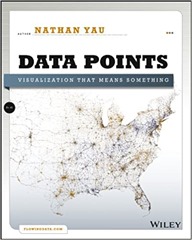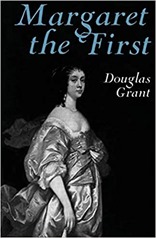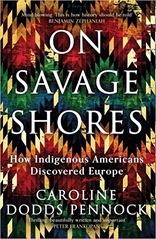 The Man from The Future by Ananyo Bhattacharya has been sitting on my bedside table in the "to be read" pile for a little while. I was aware of Von Neumann largely through his work on computers, and game theory.
The Man from The Future by Ananyo Bhattacharya has been sitting on my bedside table in the "to be read" pile for a little while. I was aware of Von Neumann largely through his work on computers, and game theory.
The book is organised thematically, firstly on Von Neumann’s early years then on the various fields in which he made contributions.
Neumann János Lajos was born in Budapest in 1903, the Hungary style was to put the family name first – his father was ennobled in 1903 – hence the "von" and he Anglicised his forename to John when he moved to America in 1930. Hungary, and Budapest, in Von Neumann’s time was a hot bed of intellectuals many of whom fled Europe to America with the rise of the Nazis. For someone with a background in physics it is a bit of a Who’s Who – Eugene Wigner, Leo Szilard, Theodore von Kármán, Edward Teller, Dennis Gabor – were all his contemporaries and he seemed to know them personally.
Von Neumann’s first contributions to the academic world were in set theory, he published a paper on defining cardinal and ordinal numbers in 1921 which still stands today. This was at a time when maths was undergoing a foundational crisis, which Einstein described as "Froschmäusekreig" – a war of frogs and mice – a term I aim to use in future!
The set theory paper was written whilst he was still at school, he then moved on to study simultaneously a degree in Chemistry at Berlin, chemical engineering in Zurich at ETH and a doctorate in maths at Budapest – passing all with flying colours. He then moved on to Göttingen in about 1925 where Heisenberg was working. Von Neumann’s contribution was Mathematical Foundations of Quantum Mechanics published in 1932 – not translated into English for 20 years. His key contribution was demonstrating that Heisenberg’s matrix mechanics and Schrödinger’s wave equation theories of quantum mechanics were equivalent. To a degree I feel his contribution held back the field, backing as it did the Copenhagen interpretation of quantum mechanics (i.e. "shut up and calculate") – it wasn’t until the late 1950’s that other started probing the philosophical foundations of quantum mechanics in more depth.
It was during this period he was enticed to Princeton and the Institute for Advanced Studies. As German science declined under the Nazis due to their purges of "undesirables" from the civil service and universities, American science which had been in the doldrums rose – one at the cost of the other.
Von Neumann was clearly politically astute and had seen war coming in the early thirties, in the late thirties he was pro-actively trying to join the US army – fortunately redirected into the Manhattan Project (a project stuffed with scientists later to become Nobel Prize winners). His key contributions were in the simulations done for the implosion bomb (at a time when the idea of computer simulations was radical and new and not yet expressed). I hadn’t realised before was that airburst bomb are used because they are more destructive than the same explosives detonated at ground level, this is why the Trinity test was executed on a tower. Von Neumann was also on the committee that chose the targets for the atomic bombs dropped on Japan at the end of the war.
Von Neumann’s work on the Bomb, and his mathematical interests led him naturally into computing. Prior to the war, as part of the fundamentals of mathematics, Kurt Gödel, Alan Turing and Alonzo Church had done work essential to the foundation of computing. Turing’s work in particular demonstrated that theoretically a machine could be built which could carry out any computation but Gödel had shown that not all problems were computable. Von Neumann met with Alan Turing in 1942, it is not clear what they talked about I imagine both the Bomb and Turing’s codebreaking work at the Bletchley Park were topics of conversation.
Von Neumann had worked with computing devices on implosion calculations, an activity in which his second wife Klára Dán von Neumann was heavily involved. After the war a number of groups were working on computers, and he was convinced that the computer would be more revolutionary than the atomic bomb. His key contribution was a draft report on the EDVAC computer being built at the Moore School of Engineering in the University of Pennsylvania. The significance of this report was that it described clearly the architecture of a modern computer with input and output units, a central processor, memory and so forth – previously computers had largely been designed for very specific tasks and appear to have been logically complex. Von Neumann’s report was widely circulated much to the chagrin of his collaborators who had hoped for lucrative patents on the design of computers.
Stepping back in time a bit, Von Neumann had started working on what would come to be known as "game theory" in the 1920s, publishing his first paper in this area in 1926, followed by another in 1937 and finally a book written with Oskat Morgenstern, Theory of Games in 1943. After the Second World War mathematicians started to infiltrate economics departments and apply game theory ideas to economic problems. This has resulted in some very lucrative public auctions (designed using ideas stemming from game theory), and a fair number of Nobel Prizes in economics.
After the Second World War the US government set up the RAND Corporation which was a think tank, possibly the original think tank. They undertook a wide range of research, trying to maintain the spirit that drove the development of the atomic bomb, radar, codebreaking during the Second World War but also operations research. Von Neumann acted as a consultant and was seen very much as the father of the organisation without necessarily holding an exalted formal position. It was at this time, when they had the only nuclear weapons that the US contemplated a first strike against the Soviets. Von Neumann started quite hawkish but become more dovish over time.
The final chapter of the book is on cellular automata, stimulated by Alan Turing’s universal machine, and also how life works – in the post-war period the structure and mechanism by which DNA works was being elucidated and a number of physicists were interested in both the structure of DNA and how it transmits information. Cellular automata are perhaps best know by John Conway’s Life game. His work was prompted by Von Neumann, although Von Neumann’s book on cellular automata was not published until 10 years after his death in 1957 from bone cancer.
I must admit the book made me think of the nature of a biography, this one is quite heavily focused on scientific themes – Von Neumann is usually introduced at the beginning of the chapter with an outline of his contributions but then a wider cast of characters are brought in. The alternative is more focussed on the minutiae of the central characters life.
From a personal point of view we find Von Neumann is a bit of party animal, married twice with one daughter. His wives found him rather absorbed in his work. His occasionally harsh exterior harboured a more caring private side.
The Man from the Future is an enjoyable read if you have some interest in computing and physics, although deep knowledge of those areas is not required.
 I picked up Data Points by Nathan Yau as a recommended book on exploratory data analysis in Storytelling with data. I have previously read Nathan Yau’s book Visualize This.
I picked up Data Points by Nathan Yau as a recommended book on exploratory data analysis in Storytelling with data. I have previously read Nathan Yau’s book Visualize This.


 The Man from The Future
The Man from The Future